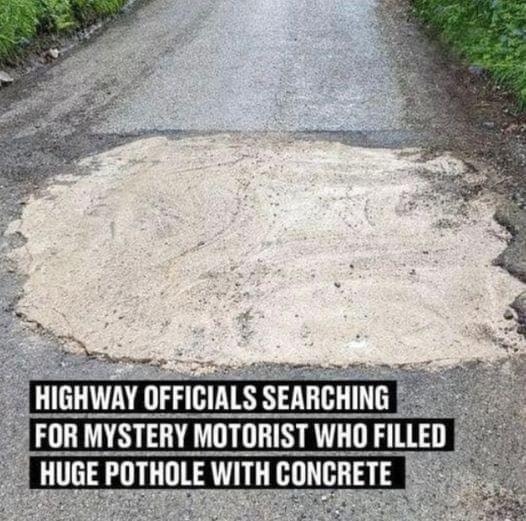
Ever driven over a pothole and wished someone would just fix it already? In Cornwall, England, one frustrated driver decided to stop wishing and start doing. Their impromptu road repair has not only filled a gaping hole but also opened up a can of worms about public infrastructure and citizen intervention.
The Pothole Problem in Cornwall
Tanhouse Road’s Lingering Issue
Imagine navigating a road that’s been closed since April due to drainage problems. That’s the reality residents near Tanhouse Road in Cornwall faced. Months rolled by, and the pothole grew from a nuisance to a hazard, making life difficult for drivers and pedestrians alike.
Residents’ Growing Frustration
Promises of repair came and went, but the pothole remained. The community’s patience wore thin as the dangerous crater continued to be an everyday obstacle.
The Bold Move: A Driver’s DIY Repair
Taking Matters into Their Own Hands
One day, an anonymous driver had enough. Armed with cement and determination, they filled the pothole themselves, transforming the impassable stretch into a drivable road once more.
Temporary Relief for Commuters
This quick fix was a breath of fresh air for locals. Finally, they could use the road without dodging a massive hole.
Official Backlash: Authorities’ Response
Cormac’s Disapproval
But not everyone was cheering. Cormac, the company responsible for road maintenance, wasn’t pleased. They argued that unauthorized repairs could mess up future work and lead to bigger problems down the line.
Safety and Liability Concerns
Officials stressed that DIY fixes might not meet safety standards, potentially putting drivers at risk and complicating liability if accidents occurred.
The Bigger Picture: A Global Trend of DIY Repairs
Citizens Worldwide Taking Action
Cornwall’s incident isn’t a one-off. Around the globe, frustrated citizens are rolling up their sleeves. In Toronto, a resident built park stairs himself after tiring of bureaucratic delays. In the U.S., communities have painted crosswalks and patched potholes without waiting for official action.
Balancing Act: Citizen Initiative vs. Government Responsibility
These grassroots efforts highlight a tricky balance. While citizen action showcases community spirit, it also raises questions about the role of government and the importance of adhering to safety protocols.
Public Reaction: Support and Criticism
Community Applause
Many locals hailed the driver’s initiative, seeing it as a necessary step when official channels fall short.
Voices of Concern
Conversely, some cautioned against setting a precedent for unregulated public interventions, emphasizing the potential risks involved.
The Bureaucratic Bottleneck: Causes of Repair Delays
Funding Shortages
Often, tight budgets mean infrastructure projects get pushed down the priority list.
Red Tape and Procedural Hurdles
Even when funds are available, bureaucratic processes can slow things to a crawl, leaving urgent repairs in limbo.
Safety Implications of DIY Repairs
Potential Hazards
While well-intentioned, amateur repairs might not adhere to safety standards, possibly leading to accidents.
Legal Ramifications
Unauthorized modifications to public property can result in legal consequences for those involved.
The Role of Private Contractors in Public Infrastructure
Outsourcing Maintenance
Many governments hire private firms like Cormac for road upkeep, aiming for efficiency and expertise.
Accountability and Oversight
However, this setup requires robust oversight to ensure contractors meet community needs and expectations.
Community Engagement in Infrastructure Decisions
Participatory Planning
Involving residents in planning can lead to more responsive and accepted infrastructure projects.
Feedback Mechanisms
Establishing clear channels for public input ensures concerns are heard and addressed promptly.
The Ethics of Unauthorized Public Works
Necessity vs. Protocol
When official responses lag, is it ethical for citizens to step in, or should protocol always prevail?
Potential Consequences
Unauthorized actions, even with good intentions, can lead to unforeseen complications and liabilities.
Lessons Learned: Improving Public Infrastructure Response
Streamlining Processes
Reducing bureaucratic hurdles can lead to swifter action on necessary repairs.
Enhancing Communication
Keeping the public informed about project timelines and challenges can build trust and patience.
Conclusion
The impromptu pothole repair in Cornwall shines a spotlight on broader issues in public infrastructure management. It underscores the need for timely government action, clear communication, and the challenges that arise when citizens feel compelled to take matters into their own hands. As communities worldwide grapple with similar situations, finding a balance between efficient public services and community initiative remains a pressing concern.





